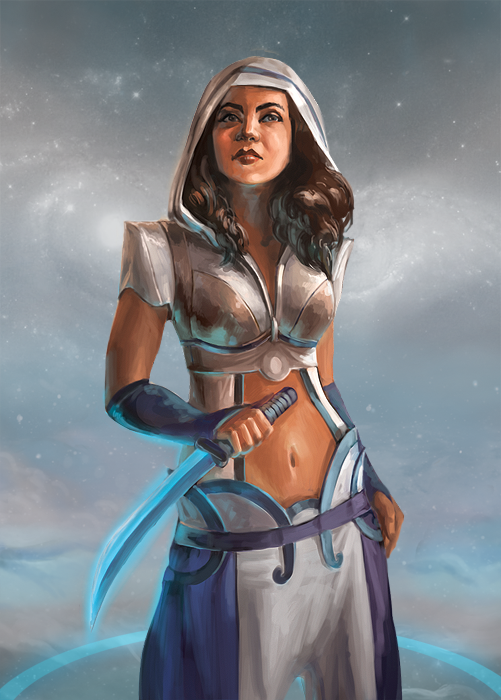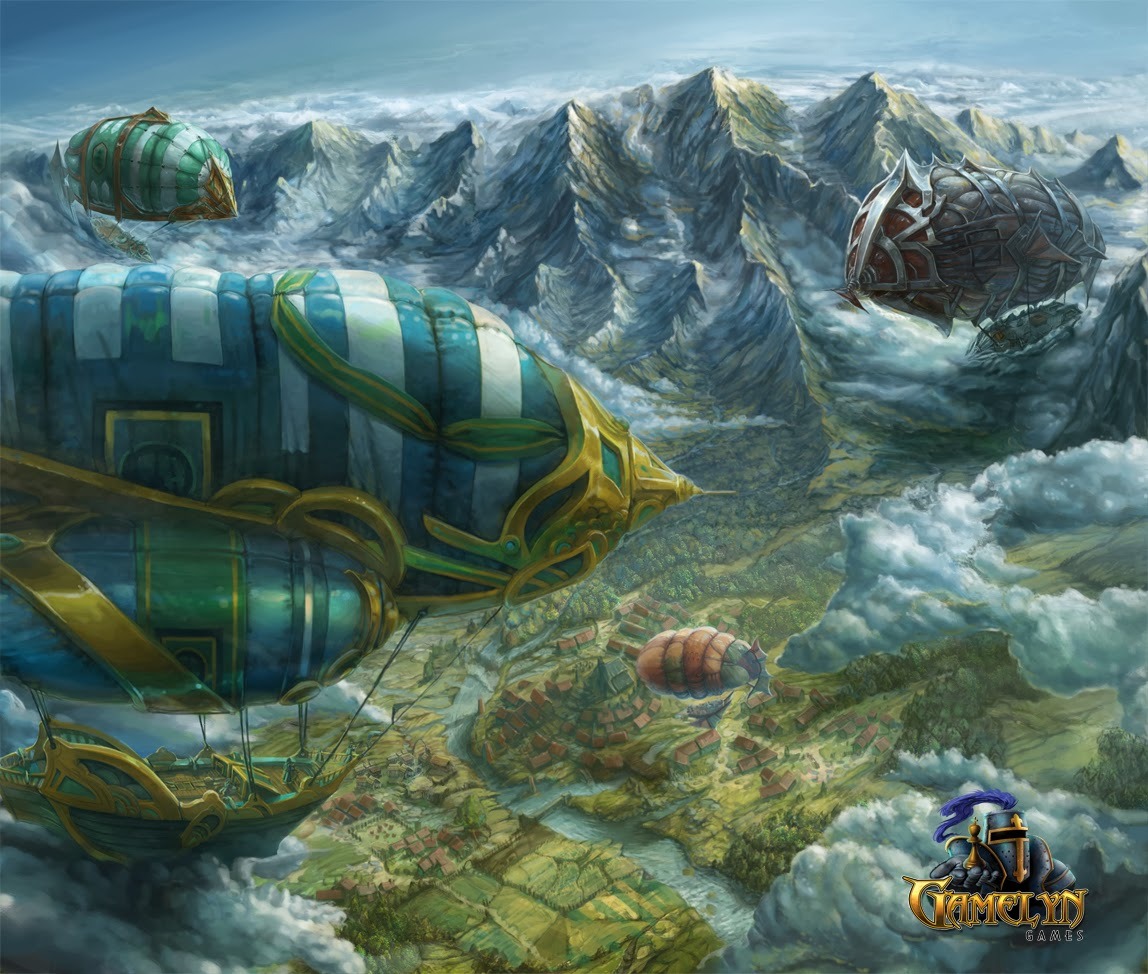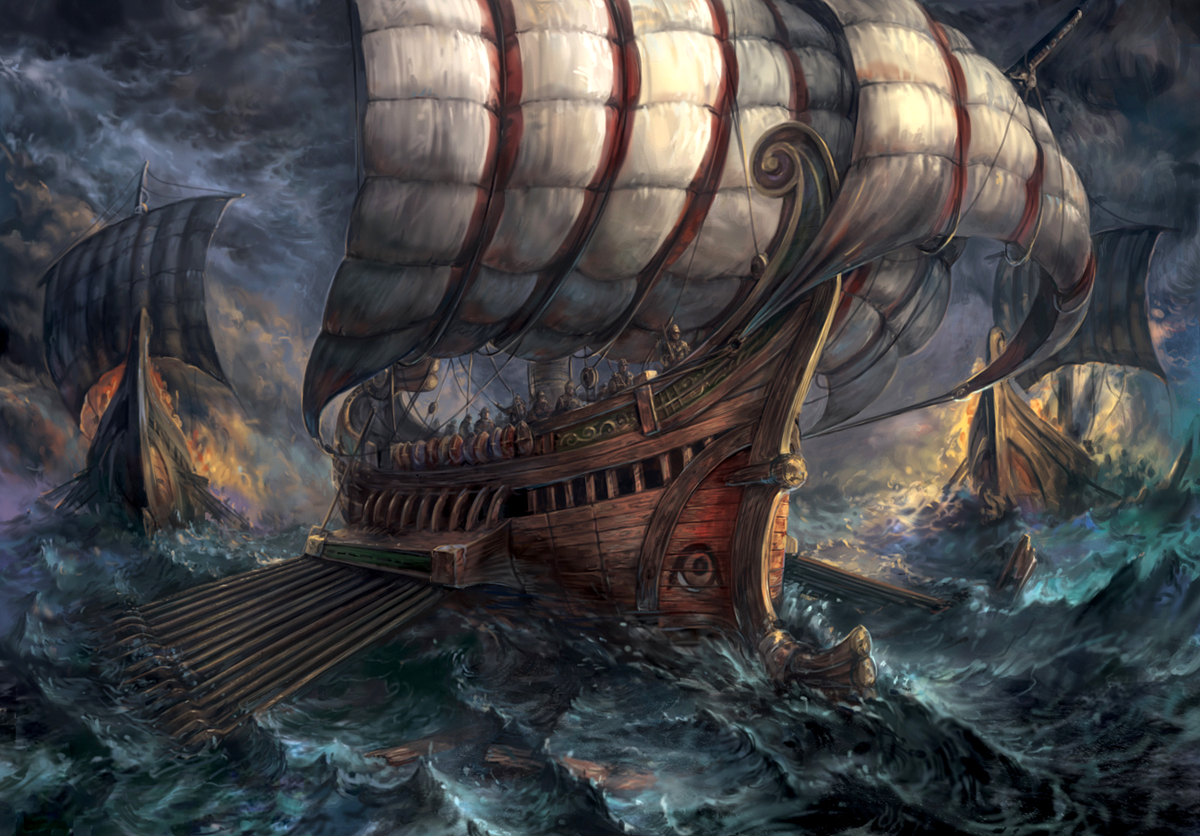Role Selection is an interview series in which we chat up folks who work, live, and play board games in a variety of ways to learn about the roles in the hobby they’ve chosen.
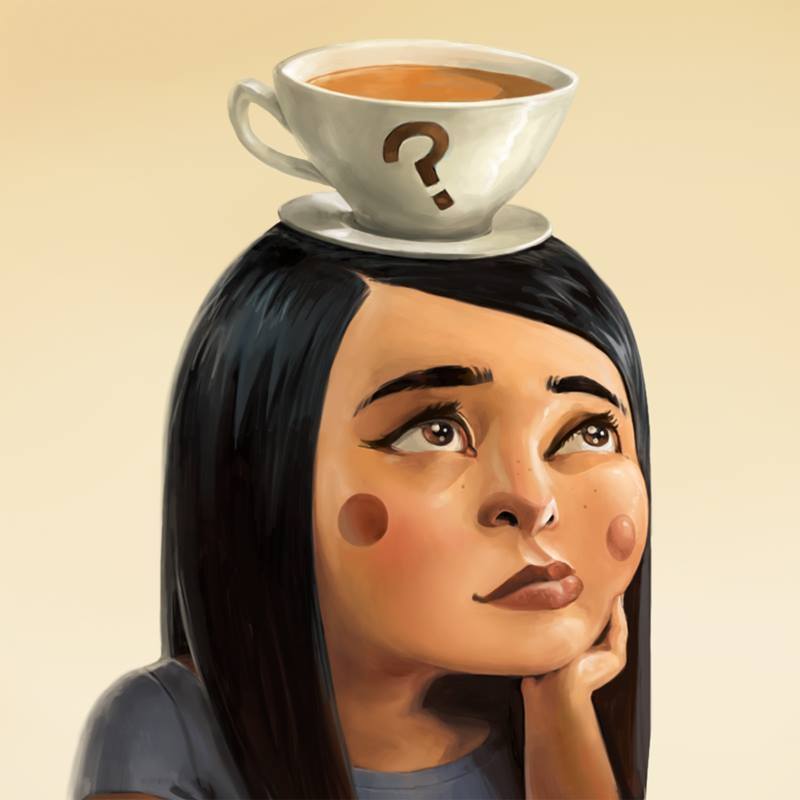 Character Name: Naomi Robinson
Character Name: Naomi RobinsonRole: Board Game Illustrator
Location: Preston, England
Gateway Games: Zombicide, Settlers of Catan
Favorite Convention Perk: Getting to test out prototypes
Quote: “It’s always gratifying when a complex problem eventually shows a good result.”
Character Bio: Unlike many of us who stumble through life searching for their passions, artists seem to know that they’re artists from a very young age. Board game illustrator Naomi Robinson is no different.Robinson credits record sleeve covers she saw as a child with developing her artistic development, along with sci-fi and fantasy illustrators such as Rodney Matthews. In school, she veered off into animation and 3D computer modeling, and Robinson worked briefly for a small indie game studio after graduation, though she continued to post her 2D work online.
It was about this time that Michael Coe of Gamelyn Games approached Robinson to illustrate the game Fantasy Frontier. Robinson had been playing games casually with friends, but with this project, her interest grew – as did her list of board game projects, clients and referrals.
Now Robinson illustrates board games as a full-time job. Some of the games she’s illustrated include Ophir, Tiny Epic Galaxies: Beyond the Black, and Hands in the Sea. And though she can’t name a title she’s most proud of, Robinson does cite Kanban: Automotive Revolution due to “the sheer complexity of the illustrative elements, especially the game board. It’s always gratifying when a complex problem eventually shows a good result.”
I asked Robinson to walk us through the process for creating board game art, which she outlined the following structure.
The Interview:
Naomi Robinson: Research/reference gathering and mood boards: Depending on the brief provided by the client, you would go and search for projects, images, styles they’ve mentioned; save images of these elements; and also research more broadly in these areas. You would then collate all this visual research in some way. I personally like mood boards.
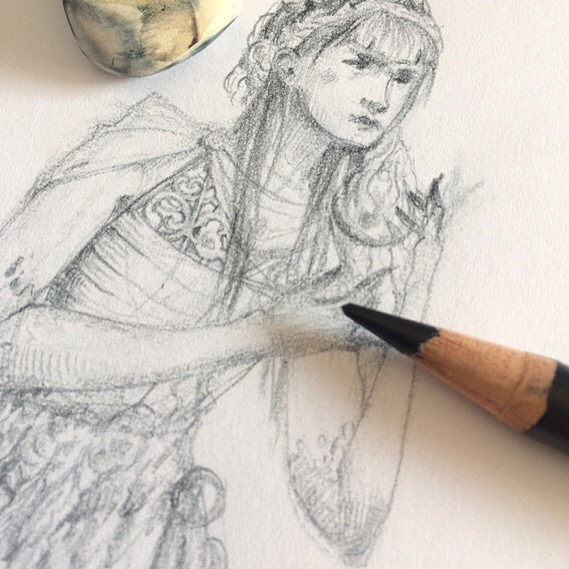 Initial Sketching: Creating rough sketch ideas is where the majority of changes and experimentation happens. Often you’ll provide the client with three-plus sketch options, or sometimes even initial color options, and then the ideas develops from here.
Initial Sketching: Creating rough sketch ideas is where the majority of changes and experimentation happens. Often you’ll provide the client with three-plus sketch options, or sometimes even initial color options, and then the ideas develops from here.
Development: This is where one or more of the initial sketches are chosen for development. Often a client will chose just one initial sketch, but sometimes elements of many sketches are combined together.
Finalizing/Polishing stages: Once all the elements are okayed in the development stage, you can move onto finalizing and polishing all the details to a finished standard. In theory, no changes should be necessary at this stage, only refinement of existing elements.
Matt Golec: What kinds of direction do you get from designers and publishers? How much back and forth is there during the process?
NR: I personally like to ask for as much direction as clients can provide at the beginning of a project. I find that visual examples are the best to work from. For example, ‘We want our box art to look a bit like X game and have the detail level of this piece of artwork,’ etc. The more information the better, and more likely you are to produce a final piece that is in line with what the client wants.
In terms of feedback from clients, there’s usually a pretty consistent stream of updates and reviews all the way through until near the end stage where finalizing the details without review is a pretty safe bet. Different elements of board game illustration also require vastly different levels of feedback.
For example, a functional game piece like a game or player board will often require a really high level of feedback and review so the piece actually works for the game. However, with more decorative pieces like the box art, developers often like to give the artists as much free reign as possible, so feedback is usually a little less involved.
Covering Cover Art
MG: How do you find jobs? Do you pitch your work, or do publishers locate you?
NR: A bit of both. After Fantasy Frontier, most of my work was referral work or return clients, and I still get a lot of work through people finding me based on previous games I’ve illustrated. But more recently I’ve been meeting with developers and publishers at regional board game events and conventions (UK Games Expo and Spiel) to see if they would be interested in my work or want to work together in the future.
MG: Box covers often help create a mood for the game contained inside. What do you think about when planning a box cover? Does it happen before or after the game components?
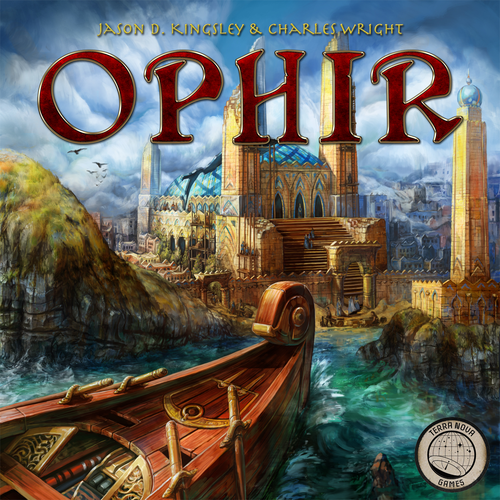 NR: More often than not the box cover is created first, probably because it takes quite a while to make, and it’s a nice piece to ease everyone into the project.
NR: More often than not the box cover is created first, probably because it takes quite a while to make, and it’s a nice piece to ease everyone into the project.
In terms of thinking and planning before a project, often the client will provide you with a brief description of the image they want to convey, and sometimes the description can be quite detailed. So you start from that base and use the general theme of the game to develop visual ideas, such as a lighter exploratory fantasy theme, or a more combative, competitive atmosphere.
MG: How do you keep a game’s art consistent so all the pieces and the box look like they go together – do you pick out certain colors, or images, or illustration techniques for each game?
NR: You do all of the things you mentioned in your question. So, often a color scheme or general feeling is chosen for the game, reference images are provided or found that show a visual consistency, whether it be in colors, props, clothing, location, etc., and you work from there. You also keep cross referencing your work against the initial reference and the other pieces you’ve created to ensure the pieces all look like they belong to the same game.
Stylistically this often isn’t difficult as you may be working in your own style, so that consistency comes naturally. But in the case you are working in a different style you just need to keep cross referencing. Also, if you’re adding card decks to a pre-established game, it’s imperative to keep checking back to the original art as you don’t want your pieces to clash.
Reference Material
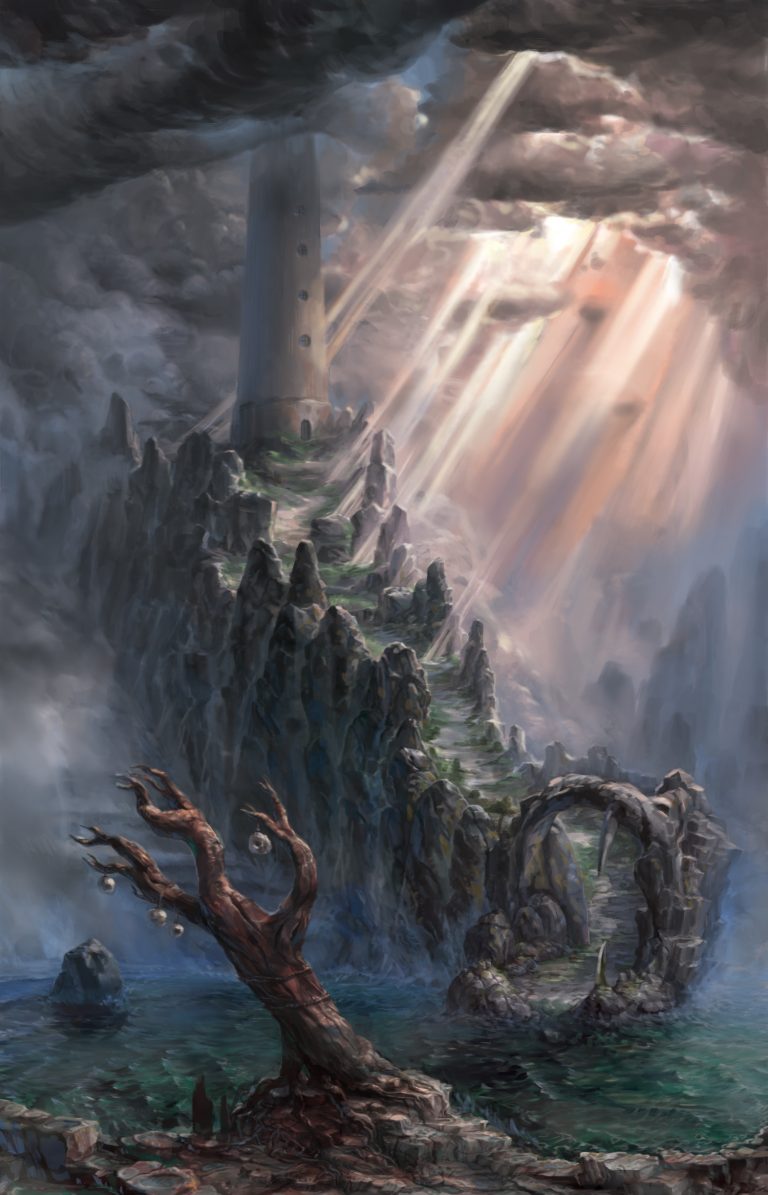 MG: How much do you work from reference images, and does that change depending on the game’s theme and subject?
MG: How much do you work from reference images, and does that change depending on the game’s theme and subject?
NR: I often use reference images, as mentioned above. I like to have a base to draw ideas and inspiration from, and quite often if you’re illustrating specific items or objects reference is essential in order to illustrate them accurately. Some games are more reference intensive. For example, Pay Dirt required me to look up a lot of vehicles and machinery types; the same with Kanban and Airlines. For the more fantasy based games, I can use more of my imagination as a visual base, but even then I’ll often look up beautiful mountain ranges or nature images as inspiration.
MG: What have you learned about board game illustration that you wish you knew when you were just starting out?
NR: I think when I first started out I massively underestimated how long projects would take to develop. Creating board games is such an involved process and so many elements and departments need to come together to create something fun and cohesive. Even creating small illustrations when there are many of them (such as 50 cards) can take a long time. I think this would have been really helpful to understand more of when I was first starting out, but I feel as though my understanding of the industry and illustration in general has improved a lot over the years.
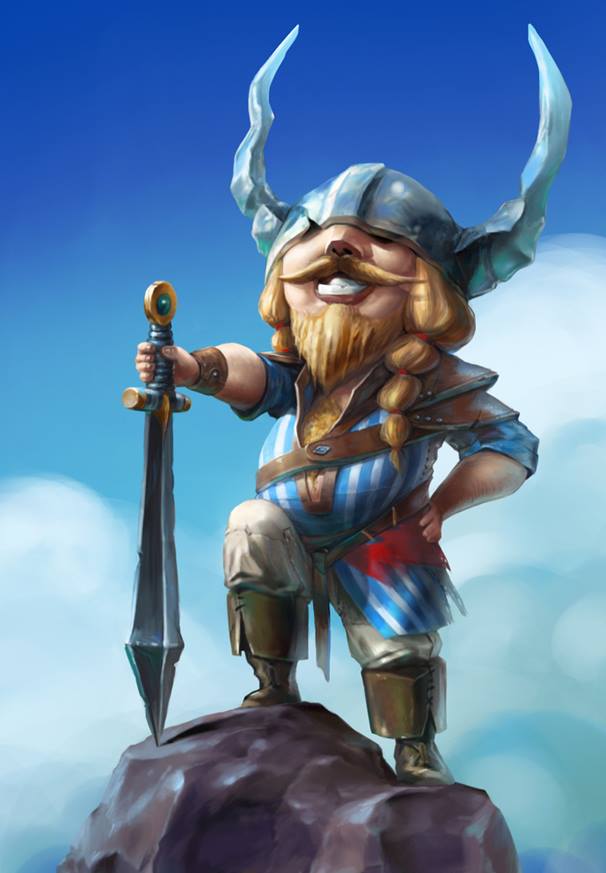
Robinson can’t talk about ongoing work, but she’s very happy with the way two recently-announced projects came out: Bemused by Devious Weasel Games, and Legends Untold by Inspiring Games.
Though illustrating board games remains Robinson’s full-time job, she said she’s interested in branching out to take on some print illustrative work. Perhaps there’s a record sleeve assignment in her future?.
You can see examples of Robinson’s work at her portfolio website or follow her on Facebook, Twitter, or Instagram.
Author’s Note: Hey all, a quick note:
I’m going to be stepping back from Role Selection for a while, but for a cool reason. Thanks to a fellowship my wife received, our family is traveling this coming year: first to Kobe, Japan, and then to Oxford, U.K!
I’ll try to occasionally pass along some gaming-related dispatches as I find them during my travels. I’m counting on meeting new folks over gaming tables around the world.
A big thanks to Ryan and Erin for giving me a forum to post these interviews, to all the Role Selection subjects who were kind enough to spend their valuable time answering my questions, and to everyone who read and enjoyed this column.
Best,
Matt
You can discuss this article and more on our social media!
Photo Credits: Multiple Photos from Naomi’s website and Facebook page.

